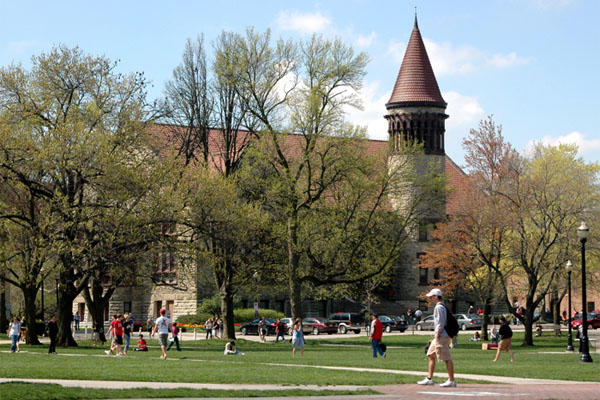The average traditional college student ranges in age from 18-22. In contrast, the matriculating student veteran ranges in ages from 22-42 with an average somewhere within the 23-27 age range. Many enter colleges and universities with some courses under their belt either online or acquired as part of education and training courses obtained during military service. As a result, most enter college skipping forward to their sophomore or junior year and missing the class-bonding period of a freshman year.
Student veterans are also accustomed to a former lifestyle of intense pressure, regimented routine, goal orientation and a disciplined combat mindset. Living in underclassmen dorms with younger, less disciplined and in many cases irresponsible students, is not appealing to these former warriors, to say the least. In some cases this mix can be a trigger. Consequently, this cultural disconnect often keeps student veterans from getting involved with their student peers and taking full advantage of all that the collegiate experience has to offer. Finding ways to connect this group of students to the university community both in and out of the classroom can be and often is a challenge.
As school administrators and faculty, our ultimate goal for every student is both academic and personal success. Research shows (Student Success in College, Kuh, 2005) involvement is the best way to help students succeed both in and out of the classroom. Socialization, campus activities, recreation, leadership, service opportunities and engagement in academic activities with peers are just a few enablers to a successful end. This philosophy holds true for student veterans also.
Fact vs. Perception. According to statistics by the VA, over 386,000 men and women who served in the military are compensated through federal disability for service-related anxiety disorders (Veterans Administration, 2010). This equates to roughly 30% of returning veterans being categorized with some form of Post-Traumatic Stress. This is a statistically significant number; however, it doesn't mean that the student veteran sitting in the back of the class is going to have a flashback if someone accidentally drops a textbook. Don't make assumptions, get to know these students; you may be surprised at what you learn. Similarly, be sensitive to the student's experiences in foreign countries when discussing pros and cons of military involvement and your opinion.
Getting Involved. As previously mentioned, being a member of a student organization can be an important factor in the success and enjoyment of the college experience. While academic learning is the primary goal of college, extracurricular activities help students learn and grow beyond the walls of the classroom and can provide the student with valuable hands-on-training to better prepare them for a future career. Participation in student organizations offers students opportunities for fellowship, leadership, recreation, and meaningful interaction with faculty, staff, and students. The good friends and times encountered through being actively involved on campus can help transform what is sometimes perceived as a large and overwhelming institution into a place a student can call home.
Understanding Resistance. If involvement plays such an important role in the student's success, why then, are student veterans resistant to participating in many of the university activities, clubs, socials and etc.? The answer may be both simple and complex.
- Priority. "I'm just too busy,"…This is a comment we hear many times as administrators of veteran service programs. What it really means is the activity does not fit within the priority list the student has established. For example. 45% of our student veterans at Lipscomb University are married with children. Following a period of service filled with deployments, training and other family separation events; their primary focus during this transition period is family reconnection and academic success. If the activity does not fit directly within this priority scheme, the student is not likely to participate. The solution; encourage participation in events/activities that include the entire family and/or can be tied directly to their academic pursuit.
- World View. As university administrators we must always be mindful that our student veterans have a different view of the world based on past military experiences. We are all products of our experiences. For student veterans, the sights, sounds, smells and events of war have forever altered their perception of the world around them. In most cases, this "new world view" is not in any way negative, on the contrary, it often times is exhibited as maturity, experience and a balanced outlook. The daily trivial challenges are no longer viewed as "the end of the world." It is this same basic premise of "it's just not that important" that also leads student veterans to steer away from the traditional collegiate activities that their younger less experienced classmates are driven to.
- Goals and Objectives. From the moment a Soldier, Sailor, Airman and Marine entered their initial military training, they were conditioned to pursue short, mid and long-range goals and to chart their progress using milestones and objectives. Each service may use their own vernacular, but at the end of the day, all meet the same end. Having a mission is extremely important to these student veterans. If an activity doesn't seem to fit within the mission of pursuing their academic goal, it is often ignored. Our challenge as faculty and staff is to help these students to understand that although they may not see immediate relevance in some activity/event participation, we can see a longer range impact in areas of personal and professional development, relationship building, networking and community building.
How can we get these student veterans off the sideline and into the game? Guide the student to programs and activities that fit within their priority list and fall within short, mid and long-term timeframes.
Types of Involvement:
- Short-term: one-day service projects (include family), member of a student organization for a semester, attend on-campus events, support fellow veterans and etc.
- Mid-term: being a member of a student organization for at least a year such as Student Veterans of America (SVA), volunteering with an organization for a year, interning in local business, on-campus job, athletic team, music group, dramatic performance group and etc.
- Long-term: Greek letter organization, professional organizations related to degree pursuit and etc.
Questions student veterans may ask:
- What am I looking for in an organization, i.e. meet new friends, experience something new, networking and etc.?
- What are the goals and objectives of the group and what affiliation does it have with community organizations?
- What time commitments are expected?
- What are the financial obligations, if any?
- Was recruitment a "hard sell"? If so, why?
- Will membership isolate me from family and friends?
- Will involvement enhance or deter the achievement of my academic and career goals?





